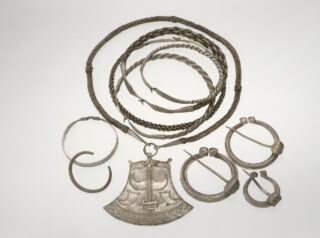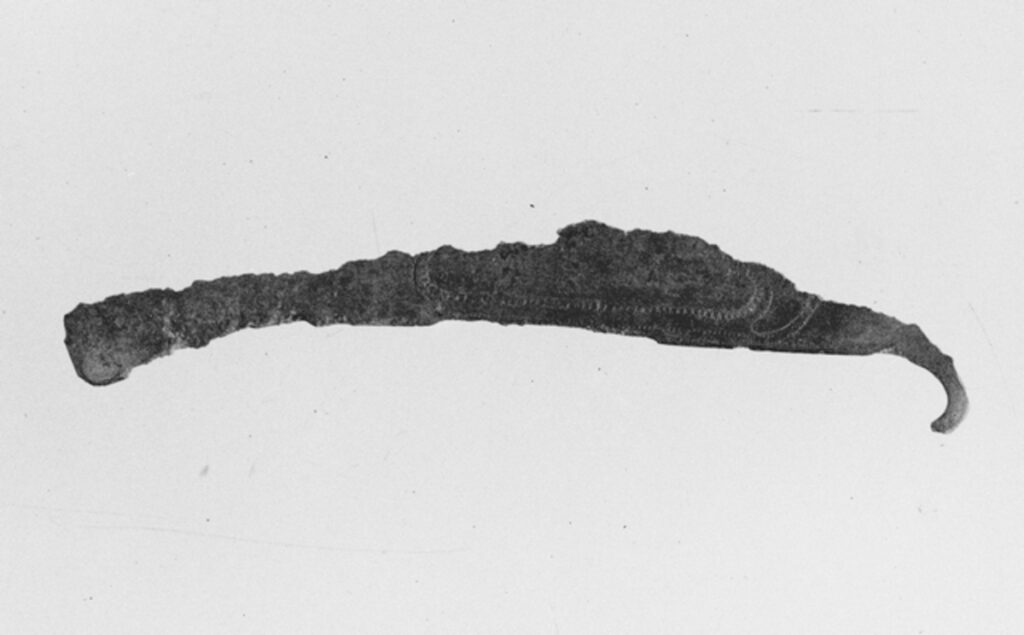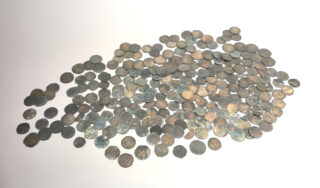The Metal Age is shown to have started in the Kuusamo region already in the second pre-Christian millennium, although the use of metals became common in historical times. The period 300-1600 AD is often called the “Sámi Iron Age” in the history of Kuusamo. The Sámi are considered the inhabitants of the area at that time and the native population more broadly, although there is no certain information as to whether the Kuusamo people of the Stone Age were Sámi or perhaps Finns.
The Sámi people mostly made their tools using traditional methods from stone, bone, wood, and leather. Most of the metal objects of the period were imported goods.
Among the finds of the period, however, are metal objects, iron axes and other tools and weapons, which the Sámi apparently acquired as trade goods, or which were left by tax collectors, military forces or other visitors who visited the area.
The most famous of the discoveries are probably the silver treasures of Lämsänkylä and Tavajärvi. They contain a lot of jewellery, the most famous of which is the so-called Kuusamo axe. Kalevala Koru has made a remanufactured product from it. The silver treasures date back to the beginning of the 11th century. Most of the individual pieces of jewellery have an eastern design, and probably come from Novgorod.

Equally enigmatic is the rich find of coins from the middle of the 12th century in Pyhälahti in Puutteenkylä, which includes more than 400 silver coins. Many of them were stamped in Friesland, the coastal region of Germany and Holland. The Frisians were well-known seafarers at the time, who are known to have sailed widely in the northern seas. It can be considered certain that the Sámi people who lived permanently in Kuusamo were in direct or indirect contact with Europe at the beginning of the 11th century.
There were two Lapland villages in the Kuusamo area in the 16th century, when the Swedish crown started regularly taxing the Sámi. In the villages of Maanselkä and Kitka there were a total of twenty tax paying residences, with hardly more than 200 residents. The head of the village was a witch who was respected for their knowledge and influence. Several witches’ graves have been found in the Kuusamo area, for example in Kitka’s Lehtoniemi and Kantokylä’s Pöyliöjärvi.
The Sámi of Kuusamo practiced hunting and gathering. People lived in a common winter village during the winter season, where hunting was the main practice. The main prey animals were deer, moose, and beaver. At other times of the year, the families of the village roamed their hunting grounds, focusing on fishing and collecting natural products. Each family had a few reindeer, which were used as draft animals and as a hunting aid to attract wild deer. There was no large-scale reindeer herding in Kuusamo until the Finnish settlers started practicing it in the 18th century. The village communities were led by a witch who had knowledge of natural forces and the ability to act as the leader of their community. Sámi culture declined strongly when Finnish settlers settled in Kuusamo at the end of the 17th century.

